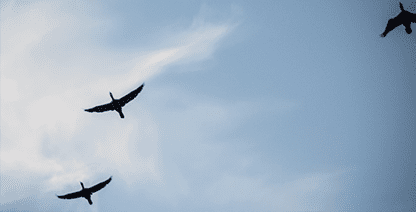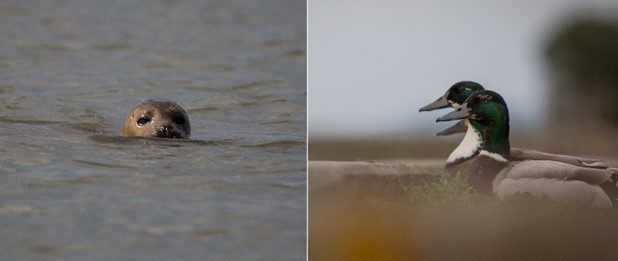Wildlife in the Haven
24 September 2021

A number of fish species are present in the dredge area, including prey species for birds and marine mammals and commercially important species such as sole, bass, skates and rays. There are a number of herring spawning grounds within the wider Outer Thames Estuary area. The Stour and Orwell estuaries offer nursery grounds for species such as sand smelt and bass.
Changes in suspended sediment concentration within the water column during the deepening works are predicted to be within the range of natural variation. As such, these changes are not anticipated have a significant impact on fish species present within the general area. Likewise, any underwater noise generated by the dredging and disposal works is expected to be of low magnitude and would only have a negligible to minor impact on fish. Given benthic ecology is not considered to be significantly affected by the deepening, a significant loss of fish prey species is also not expected.
Benthic life
The subtidal and intertidal habitats within the Stour and Orwell estuaries are dominated by worms and bivalve molluscs, including protected species such as the native oyster. Diversity within the harbour and the approach channel is low and the species present at the disposal site are tolerant to disturbance due to ongoing maintenance dredging and disposal activities.
As a result of this, the deepening works and the subsequent maintenance dredging are considered to have a negligible to minor effect on benthic habitats and species. Additionally, there is expected to be no significant impact on water quality, since the sediment has been tested for contaminating chemicals and concentrations of such are below critical threshold values that could cause harm. This reduces the risk of indirect effects on marine species outside of the immediate dredge and disposal footprint.
The potential spread of Invasive Non-Native Species (INNS) will be controlled by following best-practice guidelines and international conventions. The footprint of the dredge area is no different from the area that undergoes regular maintenance dredging, so there is no new source of sediment that could result in the spread of INNS. As such, the risk of INNS being introduced or spread is negligible.

Marine Mammals
Marine mammal species present within the Stour and Orwell estuaries, and the wider coastal area, include harbour porpoise and both grey and harbour seals. Potential impacts to these species during the dredging and disposal works, through underwater noise from dredge vessels, risk of collision with vessels and loss of prey species, are predicted to be of minor to negligible significance.
In the longer term, any impacts that could potentially arise would be associated with future dredging activities aimed at maintaining the channel at the new depth. However, the significance of these impacts would be less than those associated with the initial deepening work as the intensity of the work will be lower.
Birds
There are several important areas within the Stour and Orwell estuaries and surrounding environs for feeding, breeding and roosting waterbirds. There are a number of nature conservation areas within the estuaries and the wider Outer Thames Estuary area which are designated to protect these species. However, given the high level of human activity that occurs regularly within the estuaries and approach channel, no impact is predicted to birds during the dredging and disposal work.
The predicted change in the tidal range after the channel is deepened represents a very small reduction in intertidal area. This may cause some local re-distribution of feeding birds but, given that there are extensive areas of foraging habitats within the estuaries, this is not expected to have a significant or widespread impact. Given that benthic ecology and fish are not anticipated to be significantly affected by the deepening, a significant loss of bird prey species is not expected.

What will be the effect on local fishing?
Commercial and recreational fishing vessels operate within the general vicinity of the approach channel and disposal site all year round. Information from the Marine Management Organisation and consultation responses from local stakeholders have been used to characterise fishing activities and assess potential impacts on local fishing.
It is expected that the impacts on local commercial and recreational fishing vessels are expected to be negligible to minor, since the increase in vessel traffic during the deepening works is not predicted to be significant and the intensity of fishing within the approach channel and disposal site is relatively low. Impacts on the fish stocks would be negligible to minor too, as there is unlikely to be any significant disturbance or effects on water quality, fish prey species and seabed habitats.


